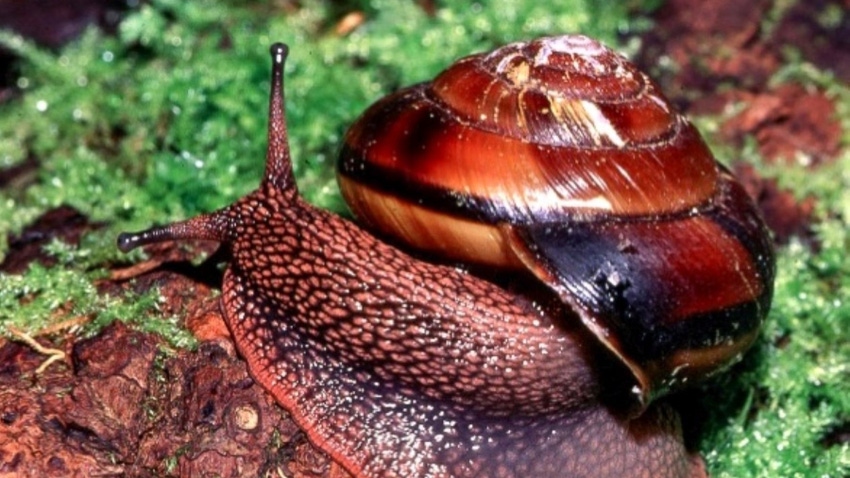
A product used to control pest slugs on farms in multiple countries is deadly to least one type of native woodland snail endemic to the Pacific Northwest, according to scientists who say more study is needed before the product gains approval in the United States.
Dee Denver of the Oregon State University College of Science led a 10-week laboratory project that showed the effect of a biotool marketed as Nemaslug on the Pacific sideband snail. The study was published today in PLOS One.
Nemaslug is based on the organism Phasmarhabditis hermaphrodita, a species of tiny, parasitic worm known as a nematode.
The speed of the Pacific sidebands’ demise depended on the concentration of Nemaslug exposure and the size and maturity of the snails, but by the end of the study all 90 were dead, whereas all 30 snails in a control group were still alive.
“This finding is a big deal because there are strong efforts to bring this commercialized nematode to U.S. markets to control invasive pests, such as the gray field slug, that cause damage to a variety of agricultural crops,” said Denver, who heads OSU’s Department of Integrative Biology and directs the university’s School of Life Sciences.
“Our research is the first to demonstrate that these nematodes infect and kill a non-target gastropod species in the Northwest, which due to its rainy climate is a land slug and snail biodiversity hotspot.”
If P. hermaphrodita were sold and released in Oregon and similar environments, Denver said, there is “strong potential” that the nematodes would infect and kill a range of non-target native species including the iconic Pacific banana slug, dealing a blow to biodiversity and creating other negative ecosystem impacts.
More research needed
Before Nemaslug is made available in the United States, more research is needed to investigate the effects it might have on non-pest slugs and snails, including research in conditions that mimic those species’ natural environments, he added.
Presently, Nemaslug is sold in Canada, Kenya and the United Kingdom and throughout the European Union.
For it to be made available in the U.S., Denver said, it would need both the approval of the federal Department of Agriculture as well as the sign-off of regulators in individual states where it was distributed.
The nematodes sold as Nemaslug work by entering small openings in the bodies of host slugs and fatally infecting them. The nematodes then reproduce inside the dead host and disperse in search of new hosts.
Denver and his co-authors – biologists and crop and soil scientists at OSU – note that the history of biocontrol of agricultural pests is somewhat checkered, in part because unintended consequences for non-target species remain understudied and hard to predict.
One biocontrol effort involving the introduction of a non-native snail, they point out, led to the extinction of hundreds of native snail species on Hawai’i and other Pacific islands.
“Terrestrial slugs and snails make up more than one-third of the total documented animal species extinctions since the year 1500,” Denver said. “Beyond factors like rising global temperatures and habitat loss, gastropods have historically suffered greatly from poorly designed and executed biocontrol attempts.”
Collaborative effort
Collaborating on this research were Dana Howe of the Department of Integrative Biology and Andrew Colton, Casey Richart and Rory McDonnell of the Department of Crop and Soil Science in the College of Agricultural Sciences.
In 2018, a paper by some of the same collaborators described the first report of P. hermaphrodita in Oregon, and last year, another paper was the first report of a similar nematode, P. californica, in Washington state.
P. californica, discovered in 2013 as a species new to science, is sold in England, Scotland and Wales as Nemaslug 2.0; Denver and McDonnell found P. californica in Oregon for the first time during a 2018-19 nematode survey.
How widespread either species is in the Northwest has not been determined, Denver said.
Source: Oregon State University
About the Author(s)
You May Also Like




